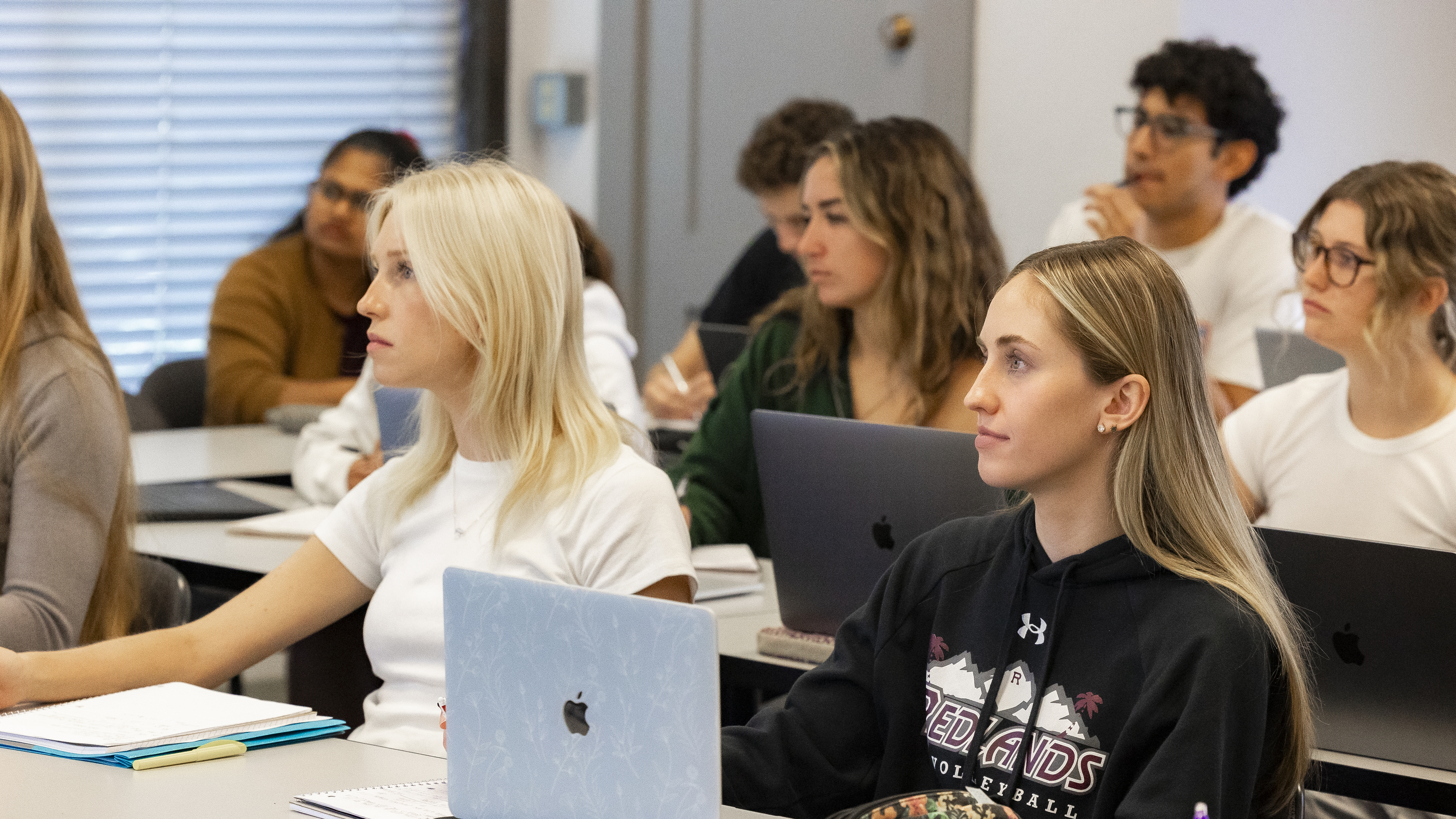Whether you are exploring the ways in which teaching can complement your current field of study or embarking on the pathway to earning a single-subject credential, the Education: Secondary Teaching Minor can enhance your undergraduate experience!
What is a Secondary Teaching minor?
The secondary teaching minor is a means for those interested in the field of education, specifically secondary teaching, to explore the field and/or prepare for a job as an educator. This minor allows students to learn more about what it means to teach in a specific content area. This minor includes courses that can transfer to the completion of a single subject teaching credential.
Why should you minor in secondary teaching at Redlands?
Educational justice is the guiding principle of the School of Education and is woven into every aspect of our programs. We endeavor to transform students into innovative scholar-practitioners who serve their communities as leaders in education. Declaring a minor in secondary teaching, students will receive guidance on how to be change-makers in their community, engage in hands-on experiences of the classroom environment, and receive expert guidance from faculty to be well-equipped to enter the field of secondary teaching.
With the completion of a secondary teaching minor at Redlands, students will be prepared to apply for graduate study immediately upon graduation, with the ability to complete a secondary teaching credential (1 additional semester) or a master’s in education with a secondary teaching credential (2 additional semesters).
Pre-requisities
Students requesting to add the Education: Secondary Teaching minor are required to show evidence of an active Certificate of Clearance and evidence of a negative skin TB test (result within the last two years; or chest x-ray exam within the last five years), which are requirements aligned with the expectations of external partners in ensuring suitability to engage in on-campus activities at K-12 districts.
Declaring a Minor in Education: Secondary Teaching
College of Arts and Sciences students can declare a Minor in Education: Secondary Teaching through the Registrar’s Office. Students should complete the Declaration of Major/Minor form available on the Registrar’s Office’s Forms webpage. Please be aware that a valid Certificate of Clearance and evidence of a negative skin TB test (result within the last two years; or chest x-ray exam within the last five years) must be attached to the Declaration of Major/Minor form for the application to be reviewed.
If you have any questions about submitting the necessary documentation, or if you did not attach it to your original request, please reach out to the Office of Licensures and Credentialing.
Pathway to credentialing
The Education: Secondary Teaching minor alone does not prepare students to be credentialed to teach in a secondary setting. However, courses completed in this minor may apply and waive course requirements for future teacher preparation programs.
Students may continue the pathway to credentialing by extending their education to include clinical fieldwork either as an undergraduate student or after graduation through the graduate programs offered in the credential-only Preliminary Teaching Credential: Single Subject program or the combined master’s and credential in the Master of Arts in Education: Learning and Teaching Single Subject program.
Students seeking to continue the pathway to credentialing must show evidence of meeting Subject Matter Competency in their desired secondary teaching area ahead of applying for clinical fieldwork.
Classes you'll take
To view specific classes, program requirements, and coursework information, visit the current university catalog.
To complete the secondary teaching minor, students will take seven courses totaling 21 credits.
- EDUG 331: Child Development
- EDUG 401: Foundations of Learning
- EDUG 402: Single Subject Methods I: Critical Pedagogy & Instructional Design
- EDUG 404: Single Subject Methods II: Literacies for Diverse Learners
- EDUG 406: Single Subject Methods III: Content Area Teaching
- EDUG 408: Single Subject Methods IV: Content Area Literacy and Assessment
- EDUG 411: Foundations of Literacies
Find us on campus

North University Hall




